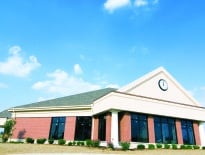Banking industry earnings rose, net charge-offs declined to pre-crisis levels, and margins bounced back just a bit from 30-year lows in the second quarter, but community banks earned almost double what their non-community peers did, according to the FDIC’s recent quarterly banking profile.
The nation’s 5,881 community banks netted aggregate earnings of $5.3 billion in the period ended June 30, representing an increase of $555.3 million or 11.8 percent from the prior year period, while non-community banks increased earnings by 6.4 percent over that period. Industry-wide earnings totaled $43 billion in net income, representing a year-over-year increase of $2.9 billion, or 7.3 percent. Nearly 60 percent of all banks posted higher year-over-year earnings, while just 5.6 percent posted losses. In the year-ago period, the FDIC said, 6.8 percent of all banks reported net losses.
But the industry still faces challenges, largely due to the prolonged low interest rate environment, FDIC Chairman Martin J. Gruenberg acknowledged in his remarks about the latest quarterly banking profile.
“Revenue growth has been modest and net interest margins continued to decline – even as banks extended asset maturities to mitigate the impact of low rates,” he said in a statement.
While the industry net interest margin of 3.06 percent represented a little bit of growth over the 30-year low of 3.02 percent in the first quarter, it was still down from 3.15 percent in the year-ago period.
Again, community banks performed better than the industry as a whole on this measure, averaging a net interest margin of 3.57 percent during the second quarter, although that, too, fell four basis points from the year-ago period.
Non-interest expenses also increased for community banks, totaling $15.1 billion in the second quarter and representing an increase of $1 billion, or 7.1 percent, from the year-ago period. The FDIC said that two out of every three community banks increased their noninterest expenses from the prior-year period, largely due to higher salaries and employee benefits.
Community banks invested more in people, too. The FDIC said that full-time employees at community banks totaled 442,041, up 2.3 percent from a year ago, while the number of full-time employees at noncommunity banks declined 0.6 percent over that same period.
Net charge-offs declined for a 20th consecutive quarter across the industry, falling $1.1 billion or 11.2 percent from the year-ago period. The average net charge-off rate declined to 0.42 percent from 0.50 percent a year ago, representing the lowest quarterly net charge-off rate since the third quarter of 2006. Charge-offs were down across all loan categories, except for commercial and industrial lending and auto lending, which ticked up 15.7 percent and 21.2 percent, respectively, from the same period in 2014.
Meanwhile, banks also continued to reduce their loan loss reserves, which fell by $1.4 billion or 1.2 percent in the second quarter, representing the 21st consecutive quarter of declines in that category. The industry’s ratio of reserves to total loans and leases fell to 1.40 percent from 1.45 percent during the quarter.
Problem banks continued their steady decline and just one bank failed during the second quarter. While the FDIC said nothing about the cost of compliance, it did note that 66 institutions (65 of them community banks) were merged into other banks during the second quarter. For the sixth consecutive quarter, no new charters were added.






